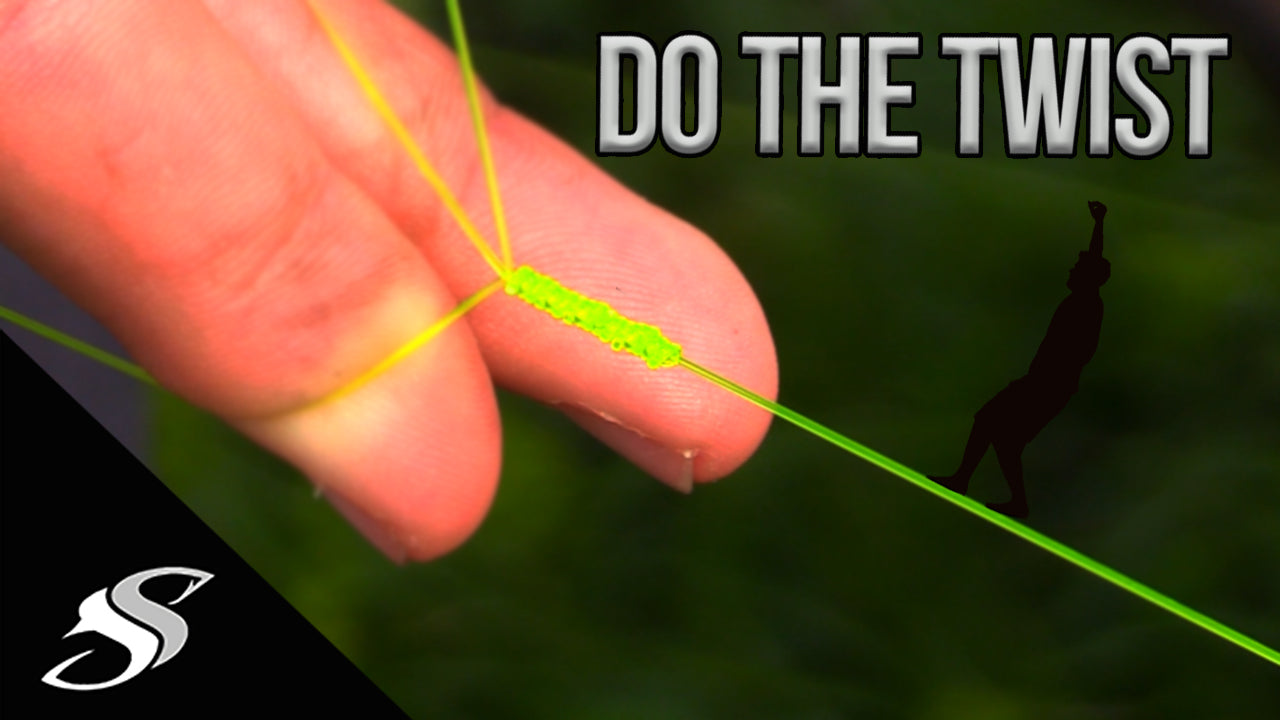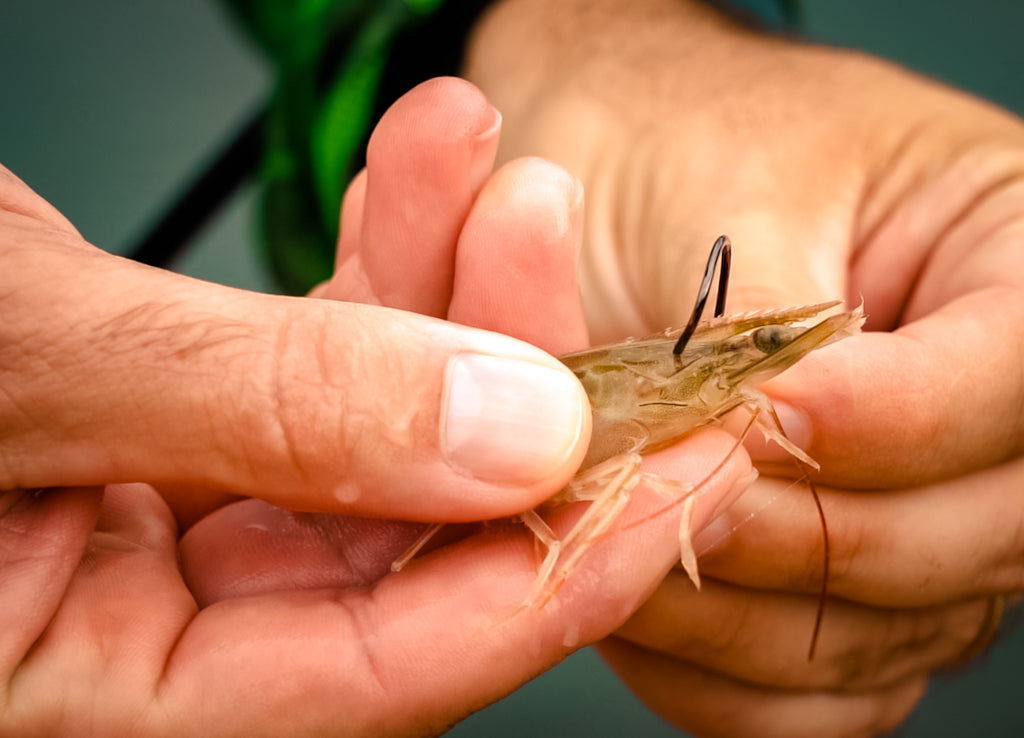Knowing how to tie your fishing knots properly is one of the most crucial learnings an angler should have. Novice anglers often bank on the most commonly known overhand knots. But an experienced angler never embarks upon a fishing expedition with such limited knowledge. It does not suffice to know which knot suits a specific situation the best, but you should also know which knot should you apply for tying the mainline with the hook and which knot would fit the best in joining the two lines together. There are several disadvantages of an improperly tied knot. An incorrectly tied knot is inherently weak and may end up breaking down the main fishing line. Another issue that anglers frequently face with such knots is its loose ends entangling with weeds or fishing poles.
To help you solve the problem of improperly tied fishing knots and, to help you determine which knots would fit your purpose the best, we have listed out the five best fishing knots of all time. We have also explained how you should tie them. However, before delving deeper into explaining each of these knots, we would like to provide a brief overview of some of the best practices in tying fishing knots.
- It is always useful to lubricate the knot with water or saliva before you pull them tight. Lubrication minimizes the friction and keeps the strength of the fishing line intact.
- Whenever you tie the knots, make sure to pull them taught. Pulling them tight mitigates the risk of slippages and loss of fish.
- The third important thing to remember is that you should trim the end of the knots. It will bring it as close to the knot as possible. Long extra ends of the knot run the risk of entangling your fishing line at unwanted places.
For each knot, you should follow these best practices so that they produce the best possible result for your fishing trip.
Now, let us have a deep dive into each of the five best fishing knots of all time and how to tie them. We have written instruction below but have also included knot infographics for visual aid and knot tying videos to help you along the way. You will be tying like a professional in no time.
Improved Clinch Knot
An improved clinch knot is one of the most widely known fishing knots. Before moving into its applications and advantages, here is a quick look into how to tie one.
How to Tie?
You can tie an improved clinch knot in four easy steps. First, you need to pass the end of the line through the eye of the hook or the swivel. Once it has passed through, pull out about six inches of the line and double it back against itself with around five to seven twists. You need to pass the end of the line through the small loop formed just above the eye. Then make it through the big loop and ensure that the coils do not overlap with each other. Now that you have passed the line's end through the loops, moisten and pull the tag end. Pull the mainline in a way that tightens it against the eye. Once it is tight at its maximum, trim off the excess.

Another way of tying the improved clinch knot is to hold the line and tag end in your fingers and rotate the hook or the lure with the other hand so that you get the desired number of twists.
Application
As one of the most widely used fishing knots, an improved clinch knot provides an efficient way of securing a fishing line to a hook, lure, or swivel. Anglers use it quite frequently to fasten the leader to the fly. However, experts do not recommend an improved clinch knot if you use a test line exceeding 30 lbs. The recommendation stems from the fact that this type of knot is harder to tie in heavier lines. If the line is getting heavier and getting close to 30 lbs, it is better to reduce the twists' number to four.
Critical Aspects
While tying an improved clinch knot, you must be careful about pulling the knot. When pulled tight with enough lubricant, the knot changes its structure. The pull compels the wrapped turns to redistribute the twists so that the inner strand becomes an outer wrap. The tightening is also crucial because, when fastened well, the tag end remains properly gripped against the hook.
Applicability with Mono and Braided lines
According to experts, improved clinch knots suit the best to lighter monofilament and fluorocarbon lines. But tying them to limp braided lines is difficult and requires another step.
Advantage
An improved clinch knot works the best when the angler wants to attach a small diameter tippet to a heavy wire hook. The extra final tuck is useful when hooked to a healthy fish, and one needs to hold the line stable. Here is a video tutorial I created on how to tie the Improved clinch knot:
Palomar Knot
How to Tie?
To tie a Palomar knot, start by doubling about six inches of the fishing line and passing it through the eye of the hook. Then tie an overhand knot on the doubled line. You should avoid twisting the line and let the hook hang loose. Now, pull the end of the loop to pass entirely over the fish hook or lure. As the final step, lubricate and pull both ends of the line to draw up the knot. Finish by trimming the excess.

Some alternative tying procedures of the Palomar knot require the final loop positioned against the hook-shaft rather than pulling it further down around the bight. This way, one can limit the movement of the hook.
Applications
Palomar knot is a simple-to-tie knot. Anglers use it for attaching a line to a hook or a fly to a leader or tippet. Many experienced anglers consider the Palomar knot as one of the strongest and the most reliable knots in fishing.
Critical Aspects
When tying a Palomar knot, you need to pass the fly or hook through the loop. The process can become complicated if the loop is not large enough.
Advantage
The most useful advantage of the Palomar loop is that one can tie it with ease. Even moderately experienced anglers can tie a Palomar knot in the dark or without looking at the line and the hook.
Applicability of Mono and Braided Lines
As simple to tie yet strong and effective knots, Palomar knots are apt for use with braided lines. Although a Palomar knot works exceptionally well with braided lines, one can use it effectively with mono and fluorocarbon lines. Video tutorial on how to tie the palomar fishing knot:
Uni to Uni Knot
How to Tie?
To tie a uni knot, you first need to run the line through the hook's eye and then double back it so that it forms a circle. Once a circle is formed, tie the uni knot by wrapping the tag end around the double line with six turns and then taking it through the loop. Next, moisten the line, and pull it to tighten the knot. Pull the mainline again to slide the knot down to the eye of the hook.

Norman Duncan was the first person ever to use the uni knot. That is why a uni knot is also known as the Duncan knot. In a short time, it became famous as a versatile knot that could serve multiple purposes. A uni knot is also called a Grainer knot. A Uni knot has the appearance of a hangman's noose, although a uni knot's internal structure differs from a hangman's noose. Uni knots often join two lines. In such cases, they are called the double grinner or the double uni knot.
Applications
A uni knot works the best when an angler intends to connect the Superline with the leader material. It serves apt as a knot meant to tie a hook. It also effectively suits the purpose when one wishes to attach the line to a reel. In all practical measures, the uni knot is very convenient to tie and heavily versatile. Vic Dunaway, the famous outdoor writer, described the uni knot as something that could efficiently serve all fishing applications that one could do with a single knot. Anglers can tie the uni knot around the shank of a hook. It works perfectly for snelling.
Critical Aspects
One needs to be careful when fastening a uni knot tight. As one keeps tightening it, the knot goes through a transformation. The outer wraps of the knot gradually become internal, whereas the inner wraps become external.
Advantage
A uni knot is immensely versatile because one can use it for snelling, creating loops, and creating end-to-end joins. A practiced angler can tie a uni knot comfortably in the dark. One of the most remarkable advantages of a uni knot is that it retains a very high percentage of the line strength. Tests have shown that uni knots can keep 82% of the line strength. However, the strength-retaining capacity of the uni knots, to some extent, depends on how one ties it. It works best when you connect it around a large diameter eye. However, if the angler uses the knot to join two lines, it retains around 75% of the line strength.
Applicability with Mono and Braided Lines
According to experts, a uni knot works well with both mono and braided lines. However, on a comparative scale, the popularity of a uni knot is more with monofilament.
Video tutorial on how to tie the Uni to Uni:
Snell Knot
How to Tie?
To tie a snell knot, you first need to pass the end of the leader through the eye of the hook. Pass it again through the eye in the same direction. Now that the end has been passed twice through the eye. Try to get a good grip over the hook eye and both parts of the line. Wrap the loop around the shank of the hook at least 7 or 8 times. The loop is still large in diameter. Shrink the loop by pulling on the standing end. Now you need to moisten and pull both ends so that the knot is well-tightened. Finish by trimming the end.

Applications
An angler can tie the leader or the tippet directly to a baited hook by tying a snell knot. Although a snell knot's original purpose was to use eyeless fishing hooks, it has become compatible with eyed hooks. The snell knot is an excellent arrangement to align the fishing line or the leader with the hook-shank.
Critical Aspects
As described earlier, to tie a snell knot, you need to wrap a loop multiple times around the fishing hook. Once the loops have been wrapped around, you must pull on the standing end so that the loop shrinks gradually. Be careful while pulling on. Hold the turns under your fingers. It will ensure that they snug down easily.
Advantage
Anglers prefer snell knots as they allow the leader or the tippet to be directly tied to a baited hook. It is one of the oldest fishing knots. Snell knots offer a reliable connection maintaining the strength of the fishing line. These knots prove specifically efficient in scenarios where the thickness of the eye is greater than the diameter.
Applicability with Mono or Braided Lines
According to experts, a snell knot works well with all three types of lines: braided, monofilament, fluorocarbon.
How to tie the snell knot video tutorial:
Bimini Twist
How to Tie?
To tie a bimini twist, start with the long tag end of the line. First, form a loop with it and then twist it at least 20 times. Now, with the help of your fingers, compress the twists. It will make the long tag end wind tightly around the twists. Once it has been winded around strongly, you need to hold the knot and make it secure with a half hitch and then a multi-loop hitch. Now, tuck the tag ends between the lines, moisten and tighten it and trim it.

Bimini twist requires experienced hands. Although the recommended number of turns is 20, some anglers have benefitted even from a fewer number of twists. There are reports of fishing teams who have got their work done with 12 twists. On the other hand, there are contradicting views that advocate for a higher number of twists. Some anglers recommend thirty turns so that it gets enough strength and does not fail while fishing.
Application
Bimini twist knots come in real handy in strong double-line leaders and for loop-to-loop connections. For double-line leaders, the bimini twist creates a strong loop. One needs to be careful about the impact of the number of twists on the line's load-bearing capacity. We have discussed it in detail in the next segment.
Critical Aspects
When tied right with the right number of twists, a bimini twist knot preserves 100% of the line's breakage strain. But according to experts, the real fishing conditions do not always offer such ideal situations under which one can achieve such perfect results each time. Moreover, to retain 100% of the strength, the fishing has to be in a cooled and wet condition where there is no scope of too high a shock load.
Like other fishing knots, the bimini twist also has its vulnerabilities. If a dry bimini twist experiences sudden jerks, it produces enough heat from the friction to lower the breaking strain level. The Bimini knots breaking limit were tested, a 70-turn bimini twist knot was attached to an 80 lbs monofilament with no leader. It failed at around the mark of 20 lbs.
Advantages
As noted earlier, a bimini twist knot works the best to form a healthy double-line leader and to create loop-to-loop connections. The bimini twist is also known for its capacity to bear the load. The knot is structured in a way that it helps distribute the strain over the length of the knot. Experts often compare its efficacy with the Australian Braid. Despite Australian Braids having similar properties and being more comfortable to learn, the Bimini twist is much more popular and widely used.
Applicability with Mono or Braid
It works well with both mono and braided lines. However, many expert anglers recommend at least 30 twists for monofilaments and even more for braids.
Bimin video kot tutorial for your viewing pleasure:
How to Prepare Your Perfect Fishing Knot?
A well-tied knot is as important in fishing as a sharp hook. However, while it is easy to buy a sharp hook from the market these days, tying a strong knot still depends on the angler's skills. Perfection indeed comes with experience. But, if new anglers avoid some common mistakes and stress, some of the excelling tricks, perfection may come quicker.
An angler should be well aware of each part of the knot's importance that plays a role in making it robust. Six main important aspects have a role to play in creating a knot robust and efficient. These aspects include the vertical line, the tag end, the wraps, the turns, the loop, and the hitch.
Why do Knots fail?
There are several reasons why a knot might fail. For instance, a knot may slip under load. It may slip so severely that the entire knot comes undone with the tail sliding away back. One can detect such slippages beforehand. If you notice a little curly pig's tail or corkscrew at the end of the line, be aware of imminent slips and take corrective measures.
Another reason why a knot might experience slip failure is the creation of an intense friction point. These sorts of situations arise when one or multiple turns of a knot come under more than bearable load. The friction points are more harmful to fluorocarbon or monofilament lines. The hot spot created out of the fiction can melt the fluorocarbon's outer skin or the monofilament line. Slip failures arising out of friction points and hot spots are relatively difficult to identify.
Protect your knot from friction and melting; it is better to use braided lines or gel-spun polyethylene lines. But then braided lines are more prone to total slippage. Therefore, when it comes to the risk of slip failure, the angler needs to make a wise decision as to what type of line he/she would be the most confident in using.
A knot may also fail if it is poorly constructed. Knot-construction failures arise out of badly done knots. Knots that cut themselves under load are poorly tied. A single overhand knot, also known as the granny knot, is one such example of a badly done or imperfect knot. Poorly constructed knots effectively reduce the breaking strain of the line material.
The primary factor that drives why one knot proves weaker than the other is the number of turns or wraps. A good knot is one that has an optimum number of twists or turns to prevent slippage. An adequate number of twists and turns also distributes the load and effectively absorbs the strain.
How to Efficiently Tie and Maintain Knots?
It is always prudent to know more than one knot and keep on practicing them. An efficient angler can always tie multiple types of knots in rapid successions under very adverse conditions. It is not enough to secure a strong knot and then being okay with it for the rest of the fishing trip. Experienced anglers keep checking the quality of their knots. They regularly check the line's working end for chafes, nicks, or other types of damages. If there are marks of wear, it is imperative to remove the entire line and re-rig it. Finally, don't forget to use loop knots to work with a leader heavier than 20 lbs or 10 kgs of breaking strain.
It is also essential to keep testing the knots by subjecting them to destruction time and again. Destroying a knot as a testing procedure helps explain how a knot gains strength and how it fails.
Tying proper knots is probably the most important yet overlooked skill in angling. If you want to excel in recreational fishing, keep practicing knot tying until you can tie them glitch-free with your eyes closed.





